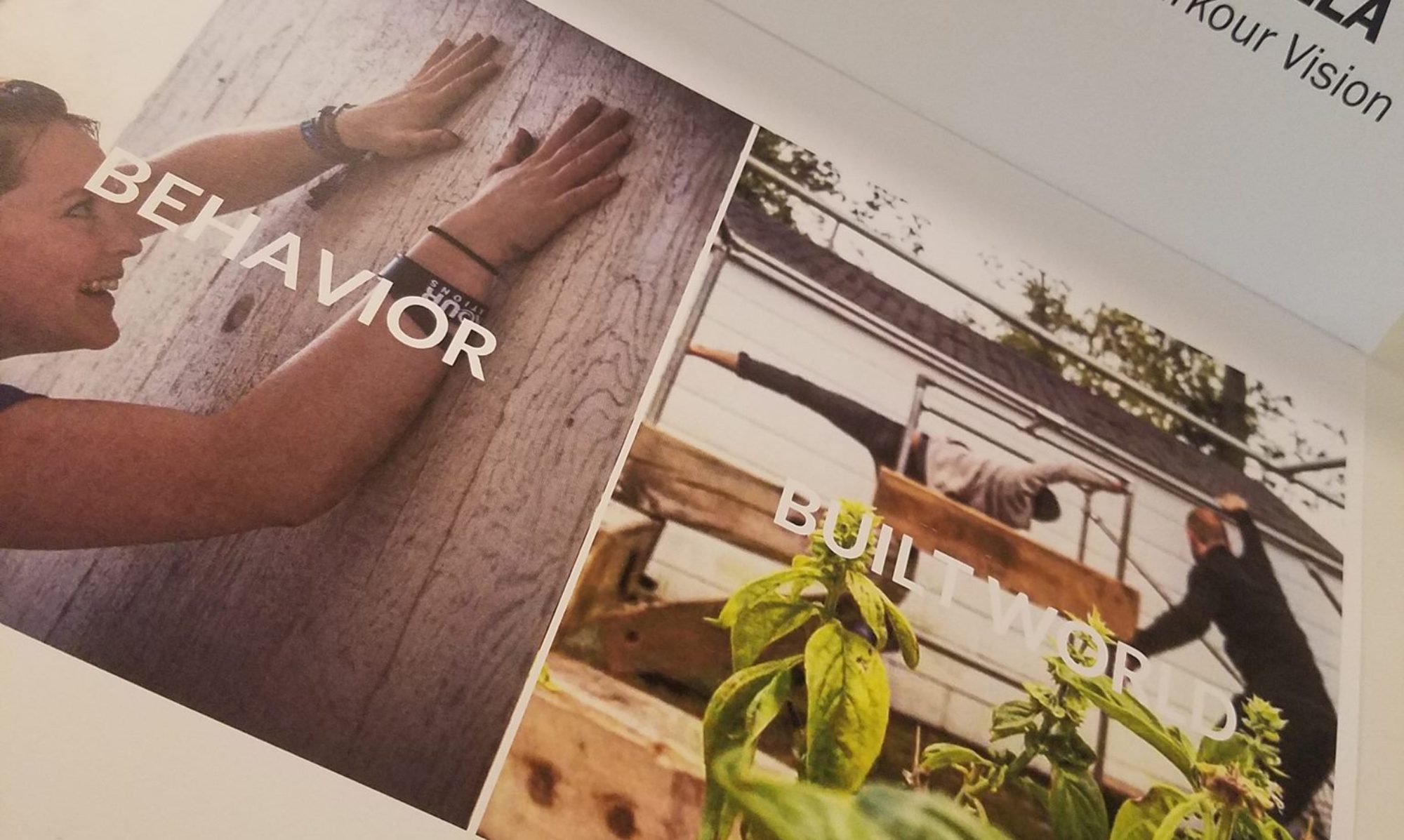Can we create an adaptive obstacle course where an adult with the full command of their body can run alongside a participant in a wheelchair or with a prosthetic… and both be able to have a physically challenging and engaging experience?

This was one of the most interesting design problems presented to me in the last few years.
The challenge wasn’t just about creating an accessible play experience, but an inclusive one. Accessible play experiences enable individuals in wheelchairs or with prosthetics to use play equipment and maneuver spaces safely. Inclusive play experiences go beyond and provide opportunities for individuals of all abilities to interact and play together.
Furthermore, I’ve seen plenty of accessible play spaces that are just boring. I believe we have advanced far enough in the design world to really begin thinking about how to design dynamic surfaces and sensory-rich spaces that allow both the 3 year old to play alongside the 13 year old, by wheel or foot.
So, with the Movement Creative and in collaboration with ACG and the NYC Department of Transportation Summer Streets Initiative, I designed the pilot version of the Adaptive Obstacle Course- an all-ages, all-abilities, wheel-chair accessible ‘pop-up’ obstacle course. Each element in the course was envisioned to be easily modifiable for the user body as needed, with safety and rigging systems designed into some of the more complex obstacles requiring prolonged hanging such as our canon ball alley, monkey bars, and traverse climbing wall. I also wanted to iterate a new version of a wooden pump track, typically used by bikes, to provide a combined walking, jumping, and riding challenge.
However, for this initial pilot build we had limited funding and faced some unique challenges when moving into the construction phase, especially since this was to be a temporary (less than 12 hours) built on the streets of NYC! We were limited to bringing some of the most modular of our equipment and limiting the roll out of rigging and larger build components.
Despite the financial and timeline restrictions, our team was able to create several new obstacles, including the rumble strips and dual-balance beams, which required both foot and wheel to navigate across. These two obstacles in particular were simple to build but challenging for all participants. The lily pads also ended up being a hit, as people could choose their own way of crossing — jumping, crawling, running, or navigating around.
Our team of volunteer facilitators were also awesome, providing open-ended guidance to participants and challenging everyone to find ‘their own way’ over, under, and through our course. I deeply believe that for design to really inspire and enable play, it must be paired with a community and culture that encourages self-expression, risk taking, and freedom to ‘rewrite the rules’ together.


